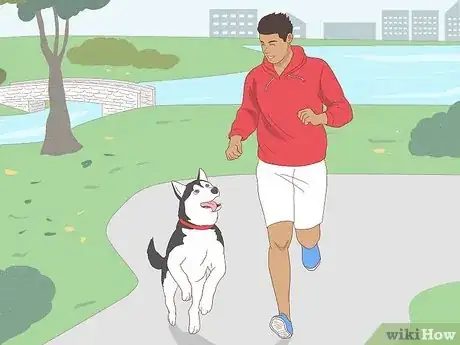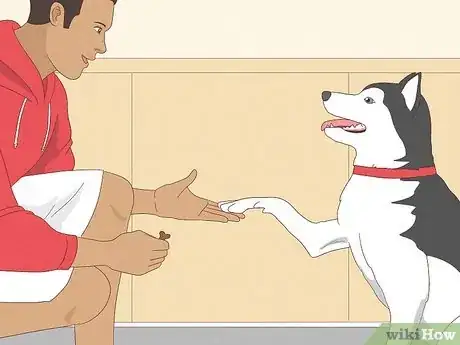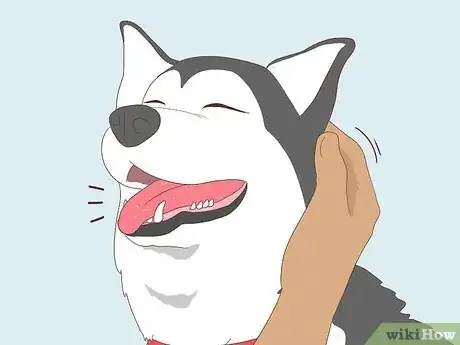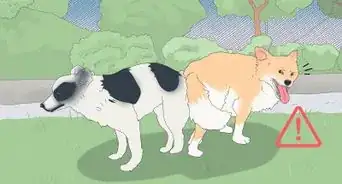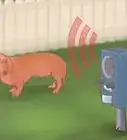This article was co-authored by Lauren Novack and by wikiHow staff writer, Eric McClure. Lauren Novack is a Certified Dog Behavior Consultant at Behavior Vets NYC where she helps fearful, anxious, and aggressive pets and their owners. She has completed coursework for her MS in Applied Behavior Analysis at Hunter College. Lauren’s research explores the intersection between training practices and animal welfare. She currently serves on the Editorial Advisory Board for Daily Paws and has appeared on Fox & Friends, Rachel Ray, and various news outlets with her dog Grayson.
This article has been viewed 11,781 times.
Are you wondering if dogs can laugh the same way people do? If so, we’ve got some great news for you! While a wagging tail usually means your dog is happy, you can also get your pup to laugh like you’ve told them a hilarious joke. Now, whether they understand humor is another thing entirely (and we'll touch on that, too). In this article, we’ll explain everything you need to know about dog laughter, including how to teach your pup to laugh on command.
Things You Should Know
- Dog laughs sound like panting or high-pitched yips. Some breeds, such as huskies, laugh in a way that sounds more like human laughter.
- Learn to mimic a dog laughing to get them to laugh on command. Many dogs will match you if you can make the appropriate sound!
- Run around, break out a fun toy, or teach your dog a new trick to make them laugh genuinely instead of on command.
Steps
Getting Your Dog to Laugh on Command
-
1Round your lips like you’re going to blow out a candle. Purse your lips together the same way you would if you were going to kiss someone. Then, open your mouth so that air can come out. Smile a little bit if you’re doing this in front of your dog.[3]
- By mimicking the same sound that dogs make when they’re laughing, you can trigger your dog to laugh in response. Do this repeatedly until your pup has made the connection and is offering the behavior regularly. Then you can add the cue just before they do it.
-
2Breathe in deep and make a breathy “hhuh” sound. If you put your hand on your throat while doing this, you shouldn’t feel any vibration. The sound should be breathy and airy, not hoarse.[4]
- Imagine making a “hah” sound without the “ah” at the end.
- You aren’t saying anything here! Don’t move your vocal cords at all. This should all come from your lungs.
-
3Repeat the sound in front of your dog until they laugh back. Get your dog’s attention and make this “hhuh” sound repeatedly. If you can mimic the sound of a dog “laughing” you may trigger your pup to laugh back![5]
- You can try giving your dog a treat for making the noise to encourage them to do it more often in the future.[6]
- You can also click a clicker and praise the dog whenever he does what you want on his own.
References
- ↑ https://www.akc.org/expert-advice/lifestyle/do-dogs-have-a-sense-of-humor/
- ↑ https://www.akc.org/expert-advice/lifestyle/do-dogs-have-a-sense-of-humor/
- ↑ https://petalk.org/petalk.org/LaughingDog.html
- ↑ https://blog.petcube.com/dog-sounds/
- ↑ https://petalk.org/petalk.org/LaughingDog.html
- ↑ https://www.akcpetinsurance.com/blog/dog-trick-fun-teach-your-dog-to-speak
- ↑ https://www.akc.org/expert-advice/lifestyle/how-to-make-your-dog-happy/
- ↑ https://www.akc.org/expert-advice/lifestyle/how-to-make-your-dog-happy/
- ↑ https://www.akc.org/expert-advice/lifestyle/how-to-make-your-dog-happy/





